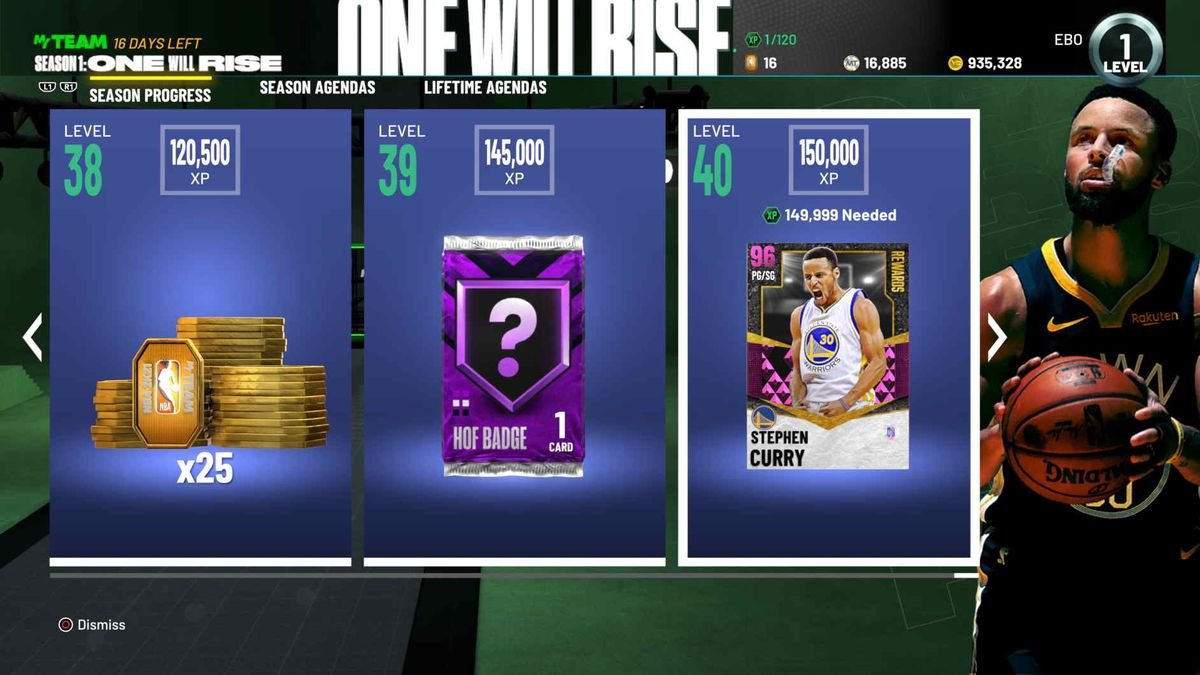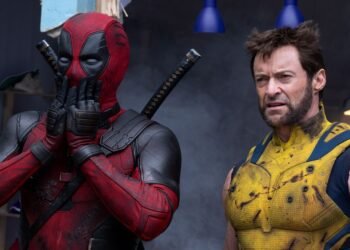I re-created my NBA 2K20 player’s look in NBA 2K21 with ease, making this year’s story mode look like a direct sequel, albeit one where my guy has gone back to college to work his way up from nothing … again.
Same player, same game, same story.
For some reason, this still worked for me — until I pulled back into MyCareer, the mode which The Long Shadow, part narrative, part onboarding, gets new players fired up to play. Or maybe until I went over to MyTeam, the card-collection/fantasy sports mode tied into the currency system that also builds up a MyCareer run. NBA 2K21 doesn’t give me a better reason to spend my virtual paper there, either.
Oh, don’t get me wrong: NBA 2K21 will still gobble up hours of my time, just like last year’s game. That’s the virtue and the shame of it all.

Let’s start with the virtue, which is that Visual Concepts’ production values and obvious commitment to each annual game as an artistic proposition can make the endless purgatory of sports video games — it’s really good, just like last year! — feel fresh and worth exploring. The studio’s gifts for flair get a great showcase with The Long Shadow.
Earnest performances, from Jesse Williams (Grey’s Anatomy) as the deceased dad casting said shadow, and the clean, show-don’t-tell writing and dialogue elevate a basic-as-bread story into a good popcorn movie. NBA 2K21, with The Long Shadow, gets what other sports games largely haven’t in their experiments with narrative modes: I don’t just need a backstory I can believe, but also one I’m proud to carry forward.
That means some kind of personal journey or transformation for the star, and supporting characters with some depth and likability. Given every chance to be a preening overdog, newcomer Vince Washington turns the character Hendrixx Cobb into a warm, believable friend instead. Michael K. Williams (Omar from The Wire) is just shady enough as a streetwise mentor to make an endgame choice — one the game even forced me to reconsider! — both reasonable and personally regrettable.
But the shame is that even in its best and most distinctive offerings, NBA 2K21 is too similar to NBA 2K20 for me to give my recommendation much supporting material beyond a gut feeling, a kind of “yeah, it’s fun; go play it” mood. Hell, NBA 2K20 also brought in a guy from The Wire for its story, and gave the player character a swaggering but lovable rival to measure up against, too. That’s NBA 2K21 for you: It worked last year, so of course it works this year.
There are changes, even upgrades, in the gameplay, but by themselves they don’t justify restarting MyCareer or MyTeam. In other years, or in other sports titles, new controls or adjustments to the core game can still make me go, “OK, now I really want to play career with this.”

That’s not what I get out of Shot Stick Aiming, a new control scheme geared more toward experienced players looking for a steeper challenge. Shot Stick Aiming requires the player to center a wedge on the shot meter with the right thumbstick, in addition to releasing that stick at the right time. I couldn’t figure it out, but players who have mastered the old timing-only system might find it worth a look.
In introducing Shot Stick Aiming, Visual Concepts rejiggered the rest of the right thumbstick inputs for ball-handling moves (called the Pro Stick). This went much better for me, and the Pro Stick, as a modifier for my player movement, feels more responsive to instinct, rather than requiring discrete and deliberate choices. As such, I can create more space from a defender and beat my man off the dribble, where I was never good at doing so before.
Even so, that’s nice to have, but by itself it doesn’t make me want to re-spec my MyCareer player to take advantage of these new abilities. Nor does it make me want to dive into MyGM with skilled ball-handlers like Kyrie Irving and the Brooklyn Nets. In fact, the lack of attention given to MyGM for a second year (MyLeague keeps its WNBA upgrade, but has none of MyGM’s role-playing) makes NBA 2K21 seem like even more of a genuflection to new and casual fans willing to spend, rather than a nod to hardcore lifers who expect a little more effort in the game’s longest-playing single-player modes.
Which, yes, brings us to the obligatory mention of microtransactions. MyTeam in NBA 2K21 is still the same arms race of grinding and real-money purchases, but it’s gotten a huge shift in tone, away from last year’s almost grotesque casino themes.

Simply put, you can now get more value out of your team and time on the court without spending money. An exchange, where players can redeem a dozen or so grunt-level cards and players for a bigger shiny card, has been added to the game. And there is a season/battle pass component whose reward tiers are earned solely through gameplay. Money, virtual or otherwise, has no effect on either. This is a step in the right direction, and it seems to speak of a 2K Sports chastened by the bad look MyTeam gave NBA 2K20.
But a change in tone is really all it is. The best efforts of NBA 2K21 are optional, like Shot Stick Aiming; variants of a theme, like The Long Shadow; or a more respectful relationship with the player, like MyTeam. And if they aren’t a case against sticking with last year’s edition, they aren’t much of a case for going in on this year’s, either.
NBA 2K21 is now available on Google Stadia, Nintendo Switch, PlayStation 4, Windows PC, and Xbox One; it will be released on PlayStation 5 and Xbox Series X later this year. The game was played on Xbox One using a download code provided by 2K Sports. Vox Media has affiliate partnerships. These do not influence editorial content, though Vox Media may earn commissions for products purchased via affiliate links. You can find additional information about Polygon’s ethics policy here.
























































